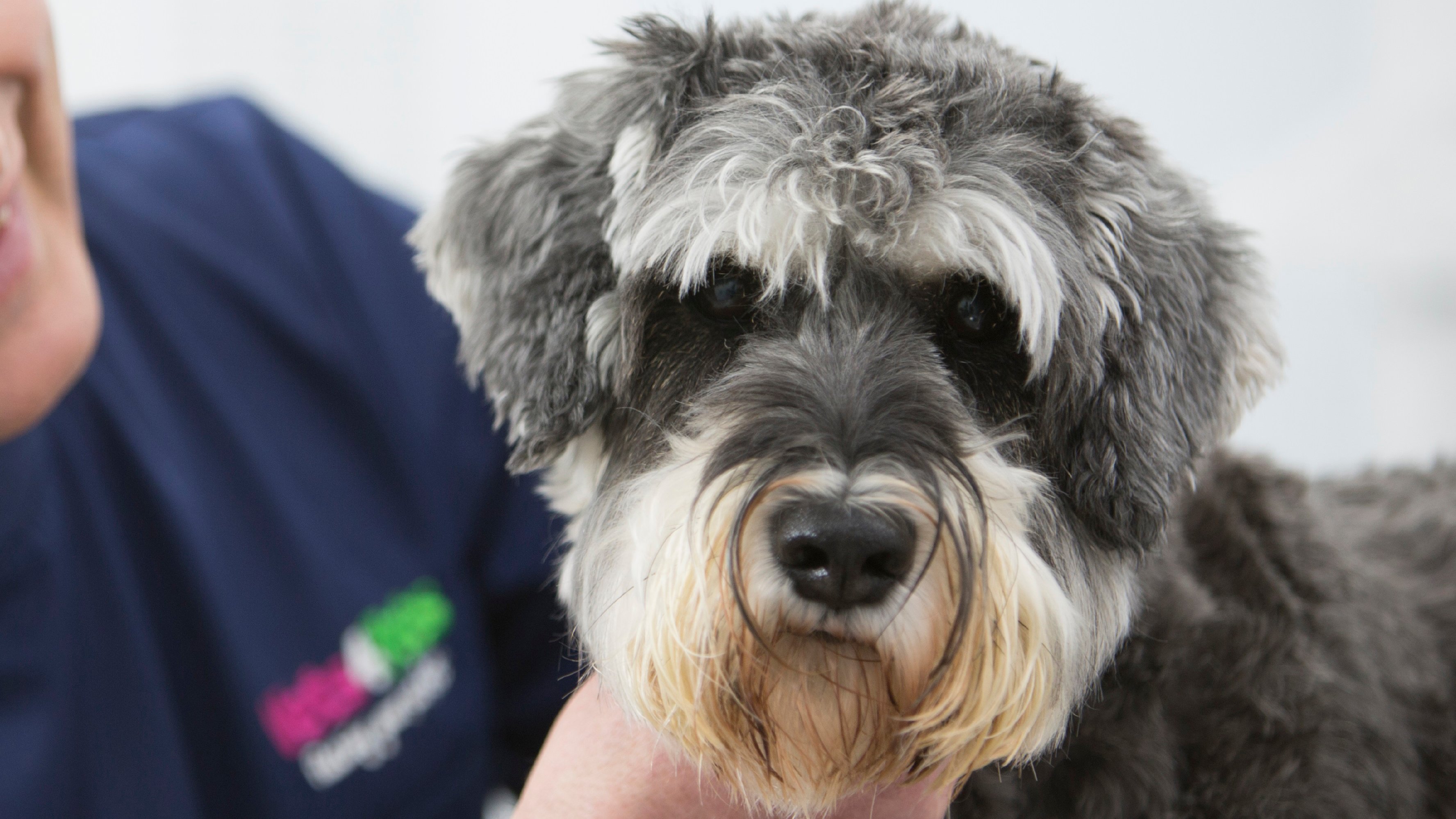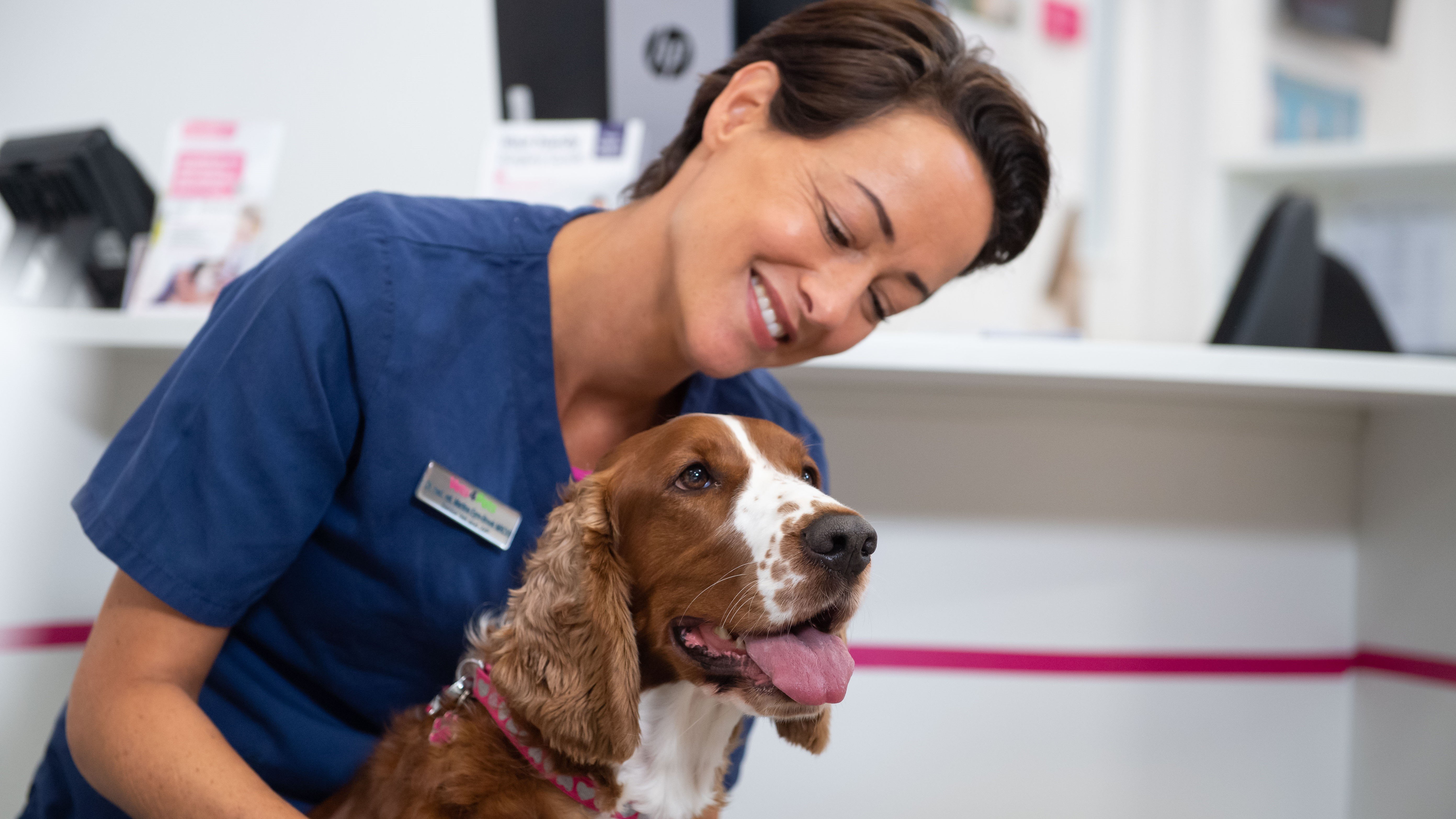
Cherry eye in dogs
Cherry eye, or prolapse of the third eyelid gland, is a condition most often seen in dogs.
Cherry eye appears as a pink or red swelling in the inner corner of the eye. It’s not usually painful at first, but it can lead quickly to pain, inflammation and to long-term eye problems unless it’s corrected surgically.
So what is cherry eye, which dogs are likely to be affected and what can you do about it?
What is cherry eye in dogs?
Dogs, cats and many other mammals have three eyelids: the upper and lower eyelids, plus the third eyelid (TEL), or nictitating membrane, that is usually drawn back into the inner corner of each eye. You don’t normally see the TEL unless there’s a problem with the eye. The TEL performs several functions: when your dog blinks, it passes across their eye, spreading their tear film evenly and it also helps to protect the surface of the eye from injury.
 Tucked away behind the TEL is the third eyelid gland, or nictitans gland, which produces around 30-50% of the tears. The gland is only loosely attached to the TEL, and sometimes it pops out and resembles a reddish-pink bobble or miniature cherry, which gives the condition its common name.
Tucked away behind the TEL is the third eyelid gland, or nictitans gland, which produces around 30-50% of the tears. The gland is only loosely attached to the TEL, and sometimes it pops out and resembles a reddish-pink bobble or miniature cherry, which gives the condition its common name.
What should I do if I think my dog has cherry eye?
Cherry eye in a dog requires surgical correction. Early-stage cherry eye in dogs is not normally painful, but you should contact your vet as soon as possible if you notice a pink or red swelling in the corner of their eye. If cherry eye is left, the gland can become irritated, especially if the dog begins to rub at their face. This can lead to conjunctivitis, swelling and injury to the eye. Sometimes it can also lead to reduced tear production, which is a lifelong condition.
If you notice something that might be cherry eye you should keep the area around the eye clean until your appointment with the vet: use cooled, boiled, water, but try not to do anything to the prolapsed gland to reduce the chances of it getting worse.
Cherry eye FAQ's
Although cherry eye can affect all dogs, some breeds are much more likely to get it than others:
- Bulldogs
- Boston terriers
- Lhasa apsos
- Shih tzus
- Other brachycephalic (flat-faced) breeds
- Cocker spaniels
- Beagles
- Bloodhounds
- Poodles
Normally, cherry eye occurs in younger dogs – typically, during their first year.
Your dog will need to have surgery to replace the gland and to encourage it to stay there. This will require a general anaesthetic.
If your dog’s eye has become inflamed, your vet might recommend delaying surgery until a short course of anti-inflammatories (usually eye drops) has reduced the swelling and irritation.
It’s important that your dog doesn’t rub at their eye, so they must be made as comfortable as possible, both before and after the procedure.
About one in 10 surgically treated cases of cherry eye will require repeat surgery and, of those, some might even need further surgery. Apart from re-prolapse, the most common post-operative complications include infection, bleeding, corneal irritation from the sutures and formation of cysts. Most dogs recover normal function after a few weeks but occasionally the cherry eye or complications persist and your vet may recommend removal of the gland.
Following surgery, your dog will need careful management for at least the first few weeks to minimise the chances of re-prolapse. Your vet will advise you what to do, but anti-inflammatories and a buster collar to prevent rubbing the eye are the minimum requirements.
Occasionally, your vet may recommend referral to an eye specialist.
Sometimes, other problems with the TEL can make it look like cherry eye. Hidden inside the TEL is a T-shaped piece of cartilage that can kink causing the TEL to fold over. To make matters more complicated, the nictitans gland can also prolapse at the same time. This condition is seen most often in large breeds of dog such as:
- Saint Bernards
- Newfoundlands
- Great Danes
- Weimaraners
Although rare, dogs can get tumours on their TEL. If your vet suspects a tumour when examining your dog under general anaesthesia, they will discuss the options with you.
Health Plans to keep your dog healthy
At Vets4Pets we offer a range of Health Plans that make essential routine treatments more affordable. You'll save money on things like annual vaccinations, flea and worm treatment and routine health check-ups.

Dog Advice
Read more of our expert dog advice to keep your dog happy and healthy.
